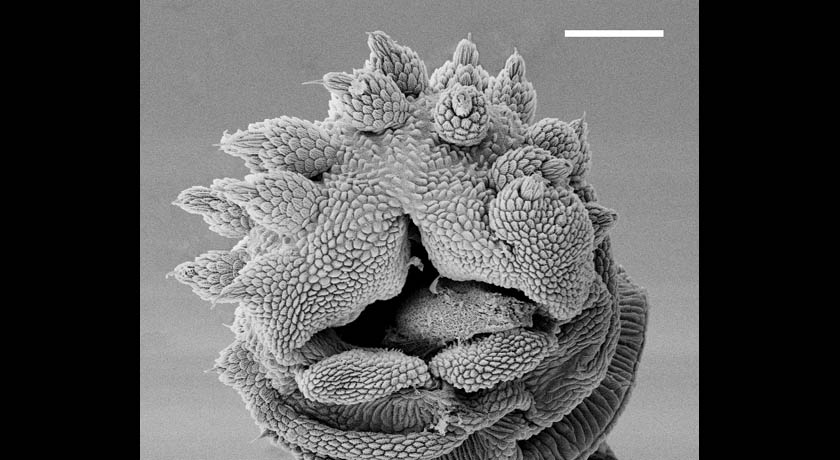How velvet worms slime their prey

Researchers used scanning electron microscopy (SEM) to examine the opening of a slime-spewing tube, or oral papilla, in Peripatus solorzano velvet worms. The bar represents 100 microns.
Cristaino Sampaio-Costa

Researchers used scanning electron microscopy (SEM) to examine the opening of a slime-spewing tube, or oral papilla, in Peripatus solorzano velvet worms. The bar represents 100 microns.
Cristaino Sampaio-Costa